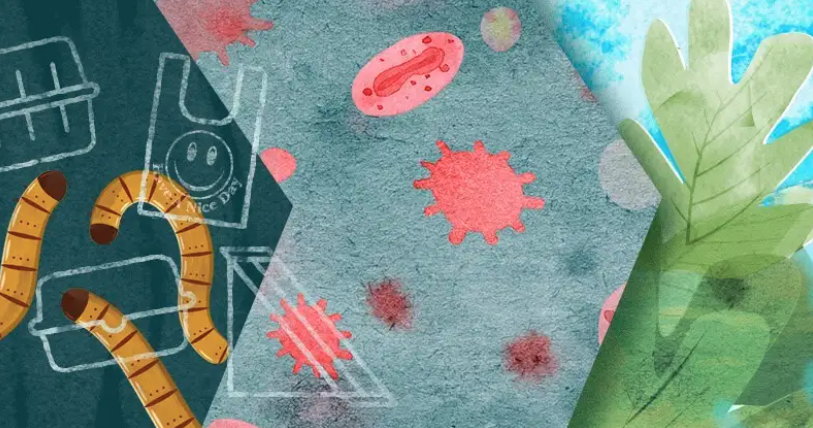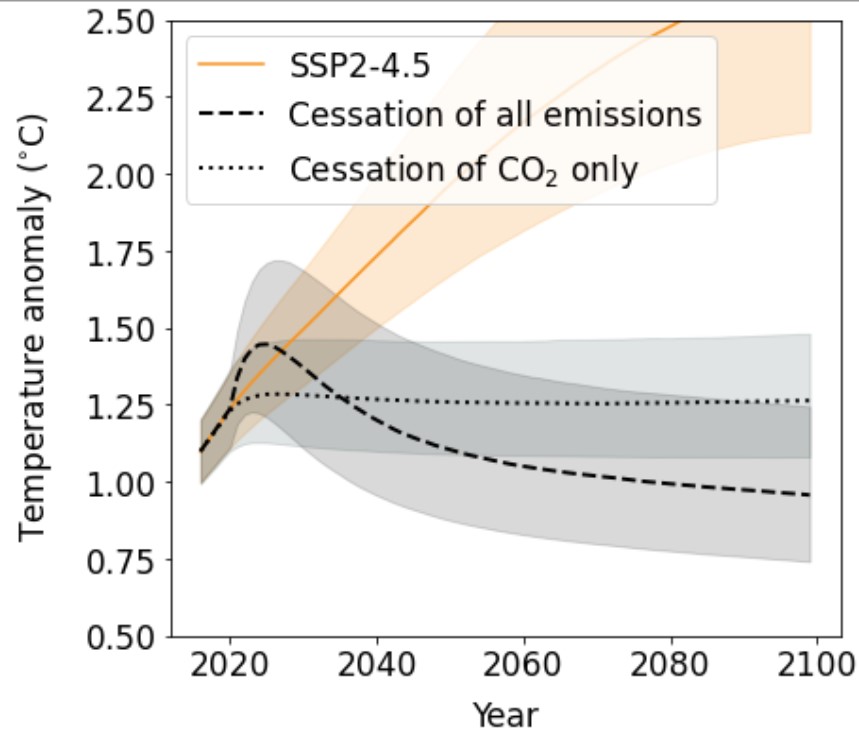Public sector should pay if EU demands efficient removal of pharmaceuticals from wastewaters, according to researchers at the Centre for Antibiotic Research, CARe, at the University of Gothenburg.
Tag: Pollution
ACS Fall 2023 media briefing schedule
Recordings of media briefings will be posted by 10 a.m. Eastern Time on each day. Watch recorded media briefings at: www.acs.org/ACSFall2023briefings.
Tubing and swimming change the chemistry and microbiome of streams
As Labor Day approaches, many people will go tubing and swimming, but do these delightful summertime activities impact streams and rivers? Today, scientists report that recreation can alter the chemical and microbial fingerprint of waterways. They will present their results at ACS Fall 2023.
Cleaning water with ‘smart rust’ and magnets (video)
Pouring flecks of rust into water usually makes it dirtier. Now, researchers have developed special iron oxide nanoparticles called “smart rust” to trap estrogen hormones that are potentially harmful to aquatic life. They will present their results at ACS Fall 2023.
Benefits of Electric Stoves on Health and Environment in Ecuador
An international team of researchers led by UC San Diego Herbert Wertheim School of Public Health and Human Longevity Science investigated the health and environmental impacts of a program in Ecuador that put induction stoves in 750,000 households.
UC Irvine receives grant to study lead exposure effects on children’s learning, behavior
The Program in Public Health at the University of California, Irvine has received a five-year, $2.7 million grant from the National Institute of Environmental Health Sciences to research the connection between low-level lead exposure during pregnancy and early childhood and children’s school performance and behavior in Santa Ana, California.
GW Expert Available: UN Committee Meets This Week on Treaty to End Global Plastic Pollution
Talks are underway this week to create a global treaty that would bring an end to plastic pollution. According to The Associated Press, a United Nations committee is meeting in Paris to work on what would be a landmark agreement that…
Scientists discover microbes in the Alps and Arctic that can digest plastic at low temperatures
Finding, cultivating, and bioengineering organisms that can digest plastic not only aids in the removal of pollution, but is now also big business.
Air Quality and Lung Cancer in Wayne County, Mich.—a Large Urban/Suburban Study
Lung cancer is the most common cause of cancer-related deaths in North America. Although cigarette smoking remains the main risk factor for lung cancer development, the importance of environmental factors such as pollution and poor air quality is becoming increasingly recognized.
Marine Seagrass Meadows Show Resilience to ‘Bounce Back’ After Die-Offs
A study in Florida Bay, one of the largest global contiguous seagrass systems, examined if a phytotoxin that accumulates as seagrass ecosystems become more enriched in nutrients prevents a marine seagrass, turtlegrass, from recruiting into open bare sediment following die-off events. While they do “bounce back,” long-term monitoring indicates the timeframe for recovery after major die-off events is at least a decade. Turtlegrass can successfully recruit into open bare sediment following die-off events due to biomass partitioning.
Treating Polluted Water with Nanofiber Membranes
In Biointerphases, researchers develop a fabrication method to increase the efficacy and longevity of membrane separation technology. The team created a nanofibrous membrane with electrospinning, in which a liquid polymer droplet is electrified and stretched to make fibers, and increased the roughness of the membrane surface by loading it with silver nanoparticles. In water, this rough surface promotes a stable layer of water, which acts as a barrier to prevent oil droplets from entering the membrane. The technology is greater than 99% effective at separating a petroleum ether-in-water emulsion.
GW Experts Available: EPA Proposes Historic Auto Pollution Limits That Would Boost EV Sales
The Environmental Protection Agency announced Wednesday plans that would ensure two-thirds of new passenger cars and a quarter of new heavy trucks sold in the United States are all-electric by 2032. According to The New York Times, “if the two rules…
Scientists discover a way Earth’s atmosphere cleans itself
Irvine, Calif., April 7, 2023 — Human activities emit many kinds of pollutants into the air, and without a molecule called hydroxide (OH), many of these pollutants would keep aggregating in the atmosphere. How OH itself forms in the atmosphere was viewed as a complete story, but in new research published in Proceedings of the National Academy of Sciences, a research team that includes Sergey Nizkorodov, a University of California, Irvine professor of chemistry, report that a strong electric field that exists at the surface between airborne water droplets and the surrounding air can create OH by a previously unknown mechanism.
FAU Developed AUTOHOLO Shows Potential as Red Tide Warning System
Current methods to monitor red tide are limited. Using AUTOHOLO, a new autonomous, submersible, 3D holographic microscope and imaging system, a study is the first to characterize red tide in the field and breaks new ground for monitoring harmful algal blooms.
What can we do about all the plastic waste?
The Institute for the Cooperative Upcycling of Plastics (iCOUP) is helping to address the plastic waste accumulation problem by developing the science needed to turn used plastic into valuable materials.
Pulsing ultrasound waves could someday remove microplastics from waterways
Colorful microplastics — less than 5 mm wide — drift along under the surface of most waterways. Now, a team reports a two-stage device made with steel tubes and pulsing sound waves to remove these potentially harmful particles from water samples. They will present their results at ACS Spring 2023.
Toilet paper is an unexpected source of PFAS in wastewater, study says
Sewage can provide information on potentially harmful compounds, such as per- and polyfluoroalkyl substances (PFAS), that get released into the environment. Now, researchers in Environmental Science & Technology Letters report an unexpected source of these substances in wastewater — toilet paper.
FAU Harbor Branch Lands U.S. EPA Grant for ‘Hands-on’ Indian River Lagoon Field Trip
The project will host 125 field trips, which will educate as many as 3,125 socially disadvantaged middle and high school students about Florida’s natural resources and the importance of conserving them.
Study Finds Air Pollution Exposure Linked to Parkinson’s Risk, Identifies U.S. Hot Spot
Living in areas of the United States with higher levels of air pollution is associated with an increased risk of Parkinson’s disease, according to a preliminary study released today, February 23, 2023, that will be presented at the American Academy of Neurology’s 75th Annual Meeting being held in person in Boston and live online from April 22-27, 2023.
Proximity to electric vehicle charging stations positively impacts home values
A new study finds that proximity to electric vehicle charging stations (EVCSs) can raise property values depending on where homes are situated. The study, conducted by a team of researchers from the University of Rhode Island, the University of Maryland College Park, Princeton University and Cardiff University, was recently published in Nature Sustainability.
Upcoming Supreme Court ruling could dramatically limit Clean Water Act, Tulane expert says
The U.S. Supreme Court could soon rule on a challenge to the Clean Water Act, dramatically affecting the quality of the nation’s waterways. Haley Gentry, a water law expert at the Tulane University Law School, says that if the high…

Enlisting mealworms to help tackle plastic waste
A University of Delaware researcher is leading a multi-institutional team exploring ways to engineer microbes from the gut of the yellow mealworm to degrade non-recyclable plastics. The work is supported with funding from the Department of Energy.
All in the planning: State policies working to fix Gulf nutrient pollution
Tackling nutrient pollution in the Gulf of Mexico is a big job, requiring coordination between dozens of states whose waters flow into the Mississippi.
AI improves detail, estimate of urban air pollution
Using artificial intelligence, Cornell University engineers have simplified and reinforced models that accurately calculate the fine particulate matter (PM2.5) – the soot, dust and exhaust emitted by trucks and cars that get into human lungs – contained in urban air pollution.
Marine Plankton Tell the Long Story of Ocean Health, and Maybe Human Too
UC San Diego researchers suggest that rising levels of manmade chemicals, accumulating in marine plankton, might be used to monitor the impact of human activity on ecosystem health and perhaps study links between ocean pollution and land-based rates of childhood and adult chronic illnesses.
Inflation Reduction Act Offers Significant Benefits for Public Health
An analysis published today in the New England Journal of Medicine describes the significant benefits The Inflation Reduction Act offers to improve public health through tax credits and other financial incentives.
Toxins from Harmful Algae Found in Bull Sharks of Florida’s Indian River Lagoon
The Indian River Lagoon (IRL) is a bull shark nursery habitat crucial to survival and recruitment of Atlantic coast bull sharks. Analysis of 123 samples found the presence of one or more phycotoxin from harmful algal blooms in 82 percent of the bull sharks and their prey items. Findings highlight the potential threat of toxic algae to the IRL’s ecosystem and surrounding human populations that may consume the same prey species. The highest concentrations of most toxins were detected in gut content samples, highlighting dietary exposure as an important mechanism of toxin transfer to bull sharks in the system.
Review: Are Climate Change and Air Pollution Making Neurologic Diseases Worse?
People with neurologic diseases like headache, dementia, multiple sclerosis (MS) and Parkinson’s disease may experience worsening symptoms due to climate change, according to a scoping review of research published in the November 16, 2022, online issue of Neurology®, the medical journal of the American Academy of Neurology.
Blind spots in the monitoring of plastic waste
Whether in drinking water, food or even in the air: plastic is a global problem – and the full extent of this pollution may go beyond of what we know yet. Researchers at the Karlsruhe Institute of Technology (KIT), together with partners from the Netherlands and Australia, have reviewed conventional assumptions for the transport of plastic in rivers.
Low-Cost Air Quality Sensors Deliver Insights on Environmental Injustice
Networks of low-cost air quality sensors are able to detect temporary peaks and “hot spots” in air pollution and could be a better tool for tracking short-term changes in air quality in communities than regulatory sensors. Monitoring fine-scale, real-time changes in air pollution could support efforts to protect public health.

Study shows hazardous herbicide chemical goes airborne
New research from the lab of Kimberly Parker at the McKelvey School of Engineering shows that amines, sometimes used as an additive in herbicides, can enter the atmosphere, where they pose risks for human health and alter the atmosphere.
Does Traffic-Related Air Pollution Increase Risk of Dementia?
Higher exposure to a certain type of traffic-related air pollution called particulate matter may be linked to an increased risk of dementia, according to a meta-analysis published in the October 26, 2022, online issue of Neurology®, the medical journal of the American Academy of Neurology. Researchers specifically looked at fine particulate matter, PM2.5, which consists of pollutant particles of less than 2.5 microns in diameter suspended in air. The meta-analysis included all available studies on air pollution and risk of dementia.
Electric buses can be ‘mobile batteries’, keeping lights on when power cuts
The Biden administration is awarding grants to school districts around the country, totaling about $1 billion, to purchase about 2500 electric school buses. The administration touts electrifying school buses as an important step for reducing emissions and pollution, but the…
Today: ANA2022 Media Roundtable to Spotlight Latest in Neuro Research
As the American Neurological Association’s 147th Annual Meeting wraps up today, October 25, the ANA is holding a Media Roundtable at 11 a.m. U.S. Central for reporters to access the latest developments in neurology and neuroscience.
BGSU researcher helps create process to decompose plastic on demand
The plastic, made from a chemical found in the extract of a vanilla bean, degrades when exposed to a specific wavelength of light
As Winters Warm, Nutrient Pollution Threatens 40% of U.S.
Scientists are ringing alarm bells about a significant new threat to U.S. water quality: as winters warm due to climate change, they are unleashing large amounts of nutrient pollution into lakes, rivers, and streams.
The first-of-its-kind national study finds that previously frozen winter nutrient pollution—unlocked by rising winter temperatures and rainfall—is putting water quality at risk in 40% of the contiguous U.S., including over 40 states.
Chula Launches a Bioproduct “Microbes to Clean Up Oil Spill in the Ocean”
Chula Faculty of Science has developed bioproducts to clean up oil spills in the ocean from their research on oil-eating microbes while getting ready to expand to industrial-scale production for ecological sustainability.
FAU Seeks Participants for Study on Health Effects of Harmful Algal Blooms
With another grant from the Florida Department of Health, FAU researchers will continue a first-of-its-kind evaluation of both the short-term and potential long-term health effects of harmful algal blooms among Florida residents.
Studies in Bangladesh detail how e-waste recycling exposes workers to chemicals
“Discarded electronics contain a lot of different types of toxic chemicals, metals and carcinogens, which can affect the environment and human health. Our research is looking into the extent of environmental pollution and human health effects from electronic waste,” Aich says.

WashU Expert: Jackson water issues result of environmental racism
The increasing demand for electric vehicles and cell phones has accelerated the need for safer energy storage after numerous instances of commercial lithium-ion batteries overheating and catching fire. Peng Bai, assistant professor of energy, environmental & chemical engineering in the McKelvey School of Engineering at Washington University in St.
Tracking air pollution disparities — daily — from space (video)
Today, scientists report preliminary work calculating how inequities in pollution exposure fluctuate daily across 11 major U.S. cities. And in some places, climate change could exacerbate these differences. They will present their results at ACS Fall 2022.
Water Quality Woes in Southwest Florida Linked to Seeping Septic Systems
From fecal bacteria to blue-green algae to red tides, Southwest Florida’s water quality has declined as its population has increased. Multiple lines of evidence from a multi-year microbial source tracking study points to septic systems as a contributing source for this decline. The study is one of few to connect downstream harmful algal blooms with nutrient loading from upstream septic systems. These water quality issues are caused by aging septic systems installed in high densities in areas with shallow water tables. Septic systems may actually be sitting in groundwater during certain times of the year, which means that they cannot function properly.
Research reveals why tackling particle pollution leads to rise in photochemical smog
Researchers from the University of York have discovered why reducing particle pollution is actually increasing surface ozone pollution in some emerging economies, negatively impacting health, ecosystems and agriculture.
Unchecked emissions could double heat-related child mortality
If carbon emissions are limited to slow temperature rise, up to an estimated 6,000 child deaths could be prevented in Africa each year, according to new research. A team of international scientists, led by the University of Leeds in collaboration with researchers at the London School of Hygiene & Tropical Medicine (LSHTM), have shown that thousands of heat-related child deaths could be prevented if temperature increases are limited to the Paris Agreement’s 1.5ºC target through to 2050.
Study shows chemical’s extent in Fairbanks winter air
A chemical compound discovered in 2019 in Fairbanks’ wintertime air accounts for a significant portion of the community’s fine particulate pollution, according to new research that seeks to better understand the causes and makeup of the dirty air.
Specific Environmental Exposures may Help Predict Increased Risk of Death from Cardiovascular Disease
A new study from the Icahn School of Medicine at Mount Sinai quantifies the cardiovascular risk posed by exposure to specific environmental factors, showing, for example, that air pollution heightens the risk of heart disease mortality by 17 percent.
Tiny fish-shaped robot ‘swims’ around picking up microplastics
Researchers in ACS’ Nano Letters report having created a light-activated fish robot that “swims” around quickly, picking up and removing microplastics from the environment.
Nature Journal Publishes UTEP-Led Pollution Study
Residents of public housing throughout the United States experience higher levels of air pollution, according to an inter-institutional study led by a researcher from The University of Texas at El Paso that appeared in Scientific Reports, one of Nature’s portfolio of journals.
Citizens Are More Supportive of Climate Action After COVID-19, but More Pessimistic in Their Expectations
Most of the Spanish population is pessimistic about the future climate actions by the government and citizens after the impact of COVID-19.

Including all types of emissions shortens timeline to reach Paris Agreement temperature targets
Instead of focusing on carbon dioxide’s effect on future temperature, new research includes the related human-generated emissions of methane, nitrogen oxide and particle pollution. Expanding the scope increases the amount of future warming that is already guaranteed by past emissions, and shortens the timeline to reach the Paris Agreement temperature targets.